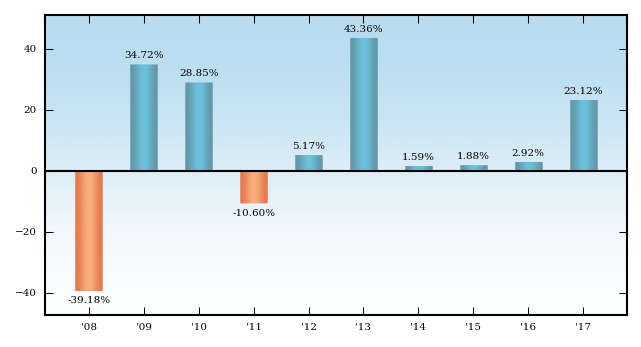7*_DD4ER;<)'_?/P!WOK[<]BV^5><<]DU./>*
M:_#T0_P&,3QZ!EV_8(%Q?C@H&#+W D& )4;+94"*08[%($!4Z(H8@B"SBXXTA
M3/% ;+1?C.?&["I2WBIDK=6IZON\5?9F[JOC8!1'K6O*/!#),YXUY-O11_U\D O++5_O=]&<@5Q?&,(+^_-_#83$3/Y
M9"91=LN?[C.174=Z\I37$CC='ROO9]NNT [/-Z^-DR0)?_O;W]"V
M;5L\_?33D&49X\:-0S@%ZA9^XK]Y3K,YX7G8J
M%5M]GV=4*>-BIW/CR>\#D:D,1*Y
MIV4HZ,7!#&8:+*BN,XU[6F[5LI1IT]-I+;F)^UKRE;*UAK*T[O/BIE4W>66M
MEU]JOWKW9U?Y[;7*"G;Z+&-N^[TAU4U]5RM-SR]%)]CR=;RY^6
M.ZVX6:G#HNV"G?:(U_Z;-9Q$T>JK$F@915IE*]J7\MH,M0R1OEU+/D^_>''B
MW3>**R].>O:"D5^M^^IV11T?>^V+:T;@Q(D3T:U;-U165@( 7GGE%6SH8IT($;WS<3!2CH9/OWV&[&%
MZL$04&1OMV)9X\8X_?@3#>(I$G^C?(K_/UA3 TFY_ZG6L&5,X8XI_-5^CT@2
M0DD#M_:/G/R!Y)XJA>P 8R@.ARVD1?2>D>[PKIOQ(^)7?=VL_AN%HR=/Q+^H
M7S/^1!I:HSIN :M].A?6;+Q$Y1A=MU-69O+)2GWG^3>;9Z*8
MC9_9.F>U/3*K$W;Z4A$#R^WVR&F=3<<5(_"UUUY#V[9MT:%#!WS\\<< @*5+
MEZ)7KUX XJ_RZMFS)]YYYQT,&## C2@1!<3R55_[Q, E"!4.M/7,N?Z"((@\
M(^L;0W[ZZ2%F1R'+'K4EM4;=3>0-8QY-&^$IA.N;B#()R"*=) A_\_SL:7AV
MU@..R\VZ$7C777O!BOO_XZ!@\>C&@TBE6K5F'V
M[-G"X0AED>G33Z4)/V03A*$
MK[GJUE&X??!(WWG@C
MOOGF&]Q[[[TH+R_'U*E338T$%H5"* J%LAAC(EOD\^P4];6$");K0&)3-D$0
M!44P& 2"P8SK=NT@UXS ,\\\$V>>>6;:M?ONN\^MX D/D<^&$O7/A BVZH"5
MT4""( @./CXL.K^-";<1SDN'.A\WR\Y6VDRFE_22\!JDDP21O]BMV_3:.,(<
M/(W+YU$)ZCT)@B"(/(6,0,(<>@?;^YU",W )[V/TL@2"( @;D!%(F".?.Z%\
M-G )?Z+6/WHH(0C"06A-()$3/%EV#D7*DVDC\@,&0.)<$_!&$$3^06L"B=R2
MS[U+=E_92!#F,7J_/$$0A E\.Q)(0X$YPH$=M #\6W8.O,:+(&Q12/6-( A]
M;-9M&@DDS,$;A"('*.;T<":2#066SEIG%?66M?4>FQ5E_5^B_BW(D/+GYDTF&T/]*Z;S1>]NAR_;KG*
MR%8]NU5V9GX;R>#IL3IN1NV?7CAV+&HS_816/O#Z"CM]@)UVSVQ>Z*5)_5\D
MC4;RU=>L] 'J-)IIB^SHLE.VB3).9N*ACZ_7!,;_,\C)Q5N9&<( R#H9Q53W
M9,5U61$2@W[;FW+/#T';KUJ^,CZRAAL]&?J51TN&<+_BD'V5R'?S_5D6#4''
M#%P]?5.+91GW9<[WU'W&\Y0J>Q.ZZ>@#%E/$@7]?^2T]KV0=-WHRK)0]
MKWP8I^R4O4!Z?'FQULI*ZVU1>AS$W&G]-I+EO"'(ZVGTRC?SMU9;PS3N:\=3
M1 \R]&;XU ()6QO Q.=V=&IK8_
MHZ[=BEVO[T;DBA/AF,@CK;=J6.RL'+(IG4&KP+.P,4145^QT!W;B8#TL\SIK
MY,9*_=;R8:V.9K8SF:K"N-_-QD'(L87Z)MZ6:;G1[JS,A&O5C=6PC.J2E7CD
M(Z+UQ:P>6>U[K;IQ0F>-W)BMWU;:(OW[Z>V17;WUKQ'(4-BUUF%LC03FR[EE
MZG18G7KS8MJ(@H4E_Q $D7?8K-L^7A-(^!6W^R-;,VK4>1(^AS83$P2AA6]'
M FD@T%ELY:4#TU/91#@L!R)%>DF(X+;^DTX21'YBMV[32"!!)* WAA $01 %
M!!F!A#WR:8C!UHX9@B (@O 79 02]LBGD3(:"22\!ND?01!9A-8$$N9PR%#R
M9-EEZ3@.@K",0[OQ22<)(C^A(V((=W'"4/)JV3DUZN+%M!'>0E1'2"<)@M"#
MCH@A?(?;4UQV*@E-QQ'90%2OG##>R D"$(#WXX$>G4PJ2#Q^/24Y2-BLOC&
M$((00N0-/48*)Y-.$D2^0D?$$ 1!^ SFI%5&H]4$05B$C$""T((Z5R)+R"[J
MEJ,&)T$0>85OIX.!U*R(LHV3%?>\A#J>=MWQW)KQJ\961^'P#EH[Z? *V8Z_
M&WG$"\-I/?9J6>O5+:U[O+;'=OH?\*B+
M0Z,SSL1?7XIX&-;U@;\17*OF:85J5]]S@];RT-1WEOPH\YOSKJ8@XLAT+R/1(H+MEQT3#O".>E(T:1[&K9"8>E]:!I(LVDEX0(;NL(
MZ21!Y"<%NR:0R!$\C?/\:)F#72#UIH2;B+RFT5 G/5]!"8+($60$$K7DLW5C
ML1-TZ#W)!)&)@_6-=)(@"(O0=#!ACT0AF'F#@9@3!Q$,S5.[@XG\1E#9'%$F
M6A5($/F*W;KM6R.0NR'-I"'B&]2' AD=2&;IL$2+FR=DC6M&N%H^-CI<*X:A
M4=ILEU66T3L43WE-3Q_]CE8=2USCY0$OG]0RK,9#B>D-2PZ^-XZG&T:'M7KM
M\#4G#UCU.WXO*Q%]]#M:=HU#Z?2O$0AD9D ^%;P2M<'KU$[Y@L'&2*"5XV_,
M./%B68F>0&3VI!@_(5K'1.NDN9NFG;F&7A[PW/!^YQJOQ\]-O)X79G0K7]LC
MHQ-M;*;7MT8@30?G"(>Y3I@]>Q*+^0K0?@)+]09%^*0=2-P
MUZY=N/CBBW'!!1< ,XZZRR\\,(+J%.G#C9NW(B%"QAXH7\\4&>R;.=DW0CLT:,'>O3HD?PM21(:-&B 5U]]%;UZ]0( !(-!].S9
M$^^\\PX&#!@@)#=N _(.*U.Z4,([$,E)> SJQ>)- ZU(NG^_;T(5..$C/E
M8^515AUN-AZ%U?JC1EUN6H<[&GWGR[?5;EO622N!B :FI:=.Z9]6/>*5"6!-
MYWAR1&6IXRI2_\WV42)AZ,5/) RK\=B(;MH->>Z&O
M!YZ?#E:R8L4*E)24H&_?OI@S9PY*2TN3]TI+2[%MVS9A6=%(%-%(A'N/!0((
M!H/JJP:_G8)I?#?CUTK<1/UJW1<,DY>-INN$45F(II^7US;*U<@6L"2()]1J
M'+7R22\,NX^1=N+OA#Y;]6\V#*-[6O$1^6XV;(>1K89GM?R?==ZJ.
MF9'%BZL9>2)I$ U#"S?RRBS%?]6PLB\%XO%($M2QMUH)&HK9->,
MP"^^^ )//?447GKI)0! 65D9*BHJDO+2SSHS6;4*=>"?=>
M(!!P\SD[/Q#M6!PRE/*V?&A)("&"'26A^D80!<<-PT?CNMM&95P_4%V%4W4&
MQ8S(NA'X]==?X_SSS\?QQQ^/TTX[#;(LHV?/GI@^?3I6K5J%>^^]%^7EY9@Z
M=:JID<"B4 BA4"B+,2\PK,S VI7E-1R;#B8(#^'7^DADA>U;MV#N0Y/QWR\_
MQ^*/OP( ?+7BWWCIZ;DX^M@3\=,/WZ'KDLC76
M?/LU+AEX(WJ<$%_;_\]E2[!R^8=HW:X#UO^\%L/&34;CIH=@XR\_X\5YCZ-!
MPX;H=DQ/G'96'P# Q#N&X)HAP]'NL,/=2[R/"0:#G&5N0-2F'91U([!GSYZH
MK*SDWKOOOONL"V:@QLU)G#1VC&3YJ>RL3 ?[)6U$[G#[X8)TDJAEU7\^Q6GG
M],%_O_P\J1<'#Q[$-4/O0/<_],2!_?O1NU,+]+WB:I34;Y#F=U_%'HR8- T
M\-W77^#NFZ_%&Y]_A]WE.S!YU*UX9]7/"!<7X]6%3V/FI+LQ8=836/STZD@%H&YMUFPZ+)@ S$YF6IB:RN>R
MR^>T$1[ K %)2Q0(!6?VNQA???9O "F]Z/67TY/W-_WO%[1L>RCJU2O)T)N;
M1XU+?I=C,=1OT ,P.^;-Z%!:4,4%Q<# -JT[X GIT\! ]"P46/LW;4+!ZJK
M45RG+O;NVHFW%K^(AY]^,7N)+"!\M3N8\"ZRB\>HV K+ FX:N 1!$'[EZ4<>
MPBO=$/#=G%JJK*G'"G_^"'B?\R97T
M$9G0NX,)<_C0*+)MX!)99_O6+9AXQQ!B4\?CPK3>2
MUR?>,02_KE]G/T$&6'XPR?=A="*G7'OK"#SQREN8.>EN?/.?%5PWDB1AVM@1
MN/#JZW#,<2<" .K6*\%C+RS!/YZ=A[\_/1_#SFN]Q>+N0QNG[??/EY2)*$0;>/P5U39F#I2POQ
MR]K5R?NO+GP:#1LU3O.S^-EYN/2:&W#+F/'XQ[-/@0'XUUMOH&/G;CCTL,.S
MGE[+#R:\(YD$R'7YTL=;'T &9#GY>_&S\["_JA(,0#@40O,6K?#K^G5@ ':7
M[\"!ZFHP #4'#F#RR%MQWL7]<>*?_X*/WGD3D8,'P0!$:FIPZUWCD>[-;) .;/?Q?BR=IU2@B:'-,N4]NS:
MB65^6:?$8/*-(5F+">%#/E_^+[S[^F+LW;,;\V<]B(L'7(]P<3&FC1V)]H=W
MQLX=VU'6LA7.ON!2 , C]]^+[D?_ 9=<C]?V?E(AN(6OQM!%+CY@U,=DJ./+Z8P4Y8)M-F^>4,1"K?M/)/X_JI
M9YV+Y1^\@_'#;\+VW[?@[(LN0X-&C;"K? ?^\>P\C)\Y)[D0/B'CBAMOQG./
MS\+G__X0P^^Y#],GW(5;QRK6*?7.\CHE.SIB^GW6-L,C\HH33_D+3CSE+VG7
M^EY^%?I>?A77_?@9CR>_/S1_D:9AFA[:7\T:=8<0^Z,[W1\[XU7T:G;$=CQ>WR=
MTDTC[\:-%YV#)Q789&39K&Y21W1EK-IRSFK_>*S@9YE1C"
M,J0'8CB?3SXV AD8&&0H^V7M'CKA3N:XU,I2M309F?Z8XKM^##+#TXJ/6KXZ
M7+-R,F4R4_$UQ))>LC2O>O$PR@=P[EFJ)FKA%NL;X\22IW]:^J1VJ^7>"NEA
MZ$M3ZXB6SNBE27E?S\WGRS_$.TL68\_N79@_ZR%<,N!Z-&C4&,_-F85U:U9C
MY_9M:-:\#.=>TA\,P".3[T6WHWO@LH$W8LBH<7ADRGCLV[L7E?LJT*)U6YS9
M[^)D*-]^N1++%O\=6S?]A@6/SL# H;&)P4"<3:.F;EAO1MH@GAQ^VNAVWAE&]$2U#
MT;8(&F[UZH Z?#6\^UI]CE[/GGX[65ZI[^+MD9/]IF@Z>&4HVC:J
MT;,CC./#5.5CKR28;.;Q.\=4556A?OWZ ( 5OVQ'O1+^NX,)\[SR[T^Q>>+W$FD# '@[;80_(9TDB.SS
MP;+7\<&;KZ%S]Z/P[9C4[8@T-R\O> JKO_T:;=L?%G\+RM19:-ZB
M)=Y]_15\]-XR=#WB:'R_ZBN<=DX?G-7O8@# M'$C4=:J#;9OW8R1$^-O4%GQ
M\3_Q_:JO<,.PS/?[9I/JJBJQQ8G'GGR!
M]ZAC=;8L7\GGM'D1O]7O7#QVDTX2!1_O#.^/E!4]A[L/WXV'%
M!I;JJDI,'3L"GZ[['77JUL6,26.Q\(E'<,?X*:BI.8!A8R>AK%5K;/CY1PPX
M[W2<=?[%^''U?U$4"F' S;?AX?%C\-,/WZ%5NT/QTC-/8OHSM:<+N-D>V:S;
MOC4"32UVMML %D #:BN)%J:HW,Q2M\,J '7Q%GZKWT[,H[D<))'_[*RH0$TD
MBN290HS5?@)@BN_)ZW%'J(K&4%)4.THMRXJ/%%_GJ_B=! >AS
M2?^DNU_7_X).W8X ]"@04-4[-X-!J!B]VZ4-FR$F9/&888-Q6*>NV+YM*X[K
M]>?D_4A-#1Y_<#*^6O$)QDQY& #0NMVAZ''"27AJYH,XMM>?L>['']"\14M4
M[-V#QZ9.0FG#1KAJ\"U93YM3D!%($%I09TMX$=))(@O84BN3;:4;(],[MV_#
M'=?UQY)/OD:#TH;XUSO+,'S@Y7AM^9=)-S^M_@XS)XW#DD^^1C 8Q**G'L?X
MVX?@L46O H@;B;?=/0$5>_?@DK_^"?,6+T.;]AW0[_+XR0/[*O9BS,W78=:S
M+^'&B\_%_%??QIR'[L>7*S[!L;4G%G@=>FT20FV;OHU
M+8SIX^_";7>-1U$PB&"MC,9-FJ)R[U[?E!V-!!( ')X.+N"1"MN-*9'DHV^_
MPXZ]%4 @ + 6# (!(K BHIJIZ1"8$5!L$ 1Y& P?K8?"Z J4KM&29;BTT^)
M*:I8%'(T$O_$8F"Q*&19 B0)S1J6XM1CCG(M;;;TA*&@ZQB1'?)-)P_KW!57
M7'<3)HRX!:W;'8J?5G^'"3,>QY>?_1N/3)F YY=]B%Y_^3]\]J\/,'7<*#1I
MV@P_KOX.=TZ*[_:-U-3@OCN'H57;=MCRVZ\X]8RS^0ODOM@;7",I'PDEX.NFQJ6!"'!H)).QCM@&0?5)V-C:&$/[#U7*S
M.AUL!;_4-R*WN&S(D4XZ0X%O#.$EG_<6/Y$CN/7>1N@45E]-8-:?2!ZXD5X]
M$N$Z^;J&7*N!6/!U*GY9-9OO@,ROW1-RZK*>:KX>W$@\G_+B1)VZES0U9/I!GMK[)6H:-
M$_U4CMLCV[+-Y('].5'?&H%I;ZXAW,.A]2"^*;M\3EN^H#.G$,B!0-P-
M&/;61-$P7%1[W%3\."E(4=K#5 )A,+SUQ.H=E/NO)9)_.E[=" C$#"/AZO)&X:9OF\KL9M\MF@MIPV2POP\SGEF.(VSII(VVFO3PF$Y,(O@=EMB-RP:"23L8UH)W>Z1;!H3;H5%6$,DR_/)"/)\?2/\
MB9MME]OMI(WE3GE>??P[$HB\+QO_8&5D(AOQR 96IM^Q.7?Q[W0P8[3KS5'<7*CN
M]HY%%S>]@/32K[A9;FY.&)%.$F*X.UKF;GVS@:6-6"ZFS698-!)( +#1*?E@
M<::MM)E$]OXCL6]P=V6-1W'@+3:DDT36,7N>JLMU6[@.%&!5(2.0 &"CHY#A
M^8J3SVG+9]PT7CS;*1$$81OA^LU;;VMZ#:Z_\.]T,/*N+ H&EL=C//F)]:+.$+C3J2&0=CZN8
MK3K@\:ENNY 12 !PMY(0A B6IW"TKGD(X;2IJZ7'TT7X%UO&2[[HI0,/E'Y[
MZ/+O=+"?7CWF ]S>K>ON:W7R-VWYC9NO,G3[=7\VUJF:A(':2D($&YLG3#ZL
MN*V3PD$Y\4H\^.NU<3DW I'3ITP-:M6S%]^G04%>4\6H6'[*^G
M%U/D<]H(9_"JCCC1F9 %2#B)B#H952<_Z:3)-;A^(Z?6UO[]^W'555?AAQ]^
M0$E)"4:/'HW9LV=C^/#AAGZ=V!B2*%6.(':,S"Z]I=-+VL"LCIT;@YY]_CI8M6Z*D
MI 0 T+MW;SSXX(-"1F!U=56VHU=0U!S8C\C! T @ !8( L$BL&@,+!;_H"@&
M%HN"!2/Q>X$@P *U3TDR(,4@QV*08U$@6@,YDOA$(,C,"FM6"! %A1 *PH"!8*(1 J0J X!!:.?P)%16"A %@P",88
M9 9 D@%)@AR5$(O&@)H:Q Y&(=?40*J)0JZ)0(K&@&@,LB1!:MT%-9>.Y<1"
MN0) O;+ R=6KV9!I%;LKM/H"%0@@4U]:UVK0%
M0BS9!R3JFRS)R;0I^P"Y)H)830QR- I$HY E&5*;KK7US2Q>J1O9B$>FOJ70
MTW7U?:VXF:DS[K9%L5@,DB1E7-]?784_'7&X9;DY-0+KUJV+A0L78MBP83CT
MT$-175V-H4.'"ODM;=@8]4KX1J!3J(LV' XA& X"@2 "RL:M.)3>N(5"8*&@
M1N,6@Q1AD)D,"4",)0XEER$%&.0 BS=NQ6$4E=2W%$^G\4J30F02+@XC$ XA
M$&! 45'JP22L,@)K=9(%@[7G*R'Y8")%)FDLIV4
MHA*D2 R8Y 0UTT9$B3(D .U>BDQQ.H4NZJ3B3Z !6K;_Z) /!V*^J;5!T@2
MXG^B44@10&8R8F"0&!!/'2 'Y-JTQ1#+07US@GSNC\R$[58\0Z&P+?\Y/XNE
M=^_>Z-V[MVE_;KTVCFE\E\$02+S\1DZ_QFH_\=^I>_PS;>,FH*2Z:S9]VU6_6U
MQ/B27W4YG_LC+_7+3H21W
M1J 7GI*23WHL]=2GO)<:H4FO_LK.5>TG^<3H]CE*A*]1&H )S4ET4)DC@JFZ
MHWSXD%1ZJ1ZA ')?YPC":RA'X'FC[_%[B>\L[9Y67Q#WE-]G5Q+.4+@C@;FP
M EFJPJ:-^LG\B*2/!C(P2&FC?::THDE2367Z5<,8XO+8GI77+J.TT=$.(H.Q4@?10PMR5/^5CX)*AL WCH0M1^"
M$"-]:BEQ16T(\D:G>1T6;YTJSS]!$$BK=Z+NE?^5WWG]"4%D&S("39&Y\)[I
MK-M(56[ET1OZ4W.I!H Z74(,]4,(3\=X'8N6P9>XI]17Y=HF@M!BR3_^CMX]
MNN/-UQ9KNKGFDGZX[+R_X;+S_H9+SST#/3JVP=K5WR?O2Y*$_OW.QH@A-R:O
M?;ER!2:.&8F)=XW"ERM7 !D6<;@JR_'GMV[LI>@#-(?YGG?,^L-3TKF!A'E
M^EUZZ"+<@J:#3<(["D:)UDXQ]:)[]6_>&BQ'TZ?>HNP'E&?L^(&>@7Z7'0)( /5
M556X>6!_=#OBR.3]65,GX_#.75%=59F4\>0C,_#(4PL@21*&#;H6QRTZ"?/G
M/(I^%UV*QHV;9#=A"4PJ/V^CB'KG?=HY@4SY\&4IR/2X^J7=5.+7>.<0VAWL
MO78>T/W^'Z(;=D,44\F*)=3Q_I
M4T[K!L ?!4S4,_62( 89DJSL&Z2D86@CJO[$K_'.%3;SR[]&H +E@!%GD[WF
MPX710X?R?J)ZJCM<]12:%NHSHOAGL&6^/20S#DJ9^G'6NL:3JNG0TT,11,M.[SY/[Z&Z9E7?M>J2&?WDW;>21U;R"M".MXCNZH49
MB\7PSW?>PHNOOP49P(9U/V/E9Y_@WBD/XA\O+$SS,W+<>#S[U%P$ @'F9F?96J]\TTQZ9;8NT9(BXY5W7
MZX>='"SUK1'(&PA4=X[*KBTU\I&>C49&-%,42:("RP@H9"K=IAN)ZDX7BNL\
ME".!RK"UXLB2?].K#/\)5"O=ZGQ*5WVM8X:U3II3AJ%U5_NJ>K1*3.5YDVAFA."\G=Z\YG^.S,]Z>64BI-:3F:HJ6:1J>0;UVFE#)X^9]8[$7W@
MA\.3Q]-%,VU1XI>(6^U5G-WG_*3[94M>0\.�%GQD/X[IM5^'7C_S!WYL.X]J9;4-:B
M)4:-FP@ F#OK85QX:7\L__ #M&E[*,X]_R(,NNI2//N/):JTI*=5G=),C/PH
MU\DJ=?IUT4P " 241!5#6UEB\A0VD@!I+^TQ_,U)M $G4P40^5Y66^/>*;
M&)GMN8@LY14]4U/9SJ9^QUVI'U35:4\/@]<6\NJH7KQY;8]^NY(>C_2V"!K^
MM/I?_;X[,SQ9=26]'NJUNU;:)B6^-0*5S8R^&ZW?9K*.7Q63C0'+5*;TXSH2
M4P-R\KO64V!F!VS%'-'SHVTRI7\7=2<:A@A:_NRJN4CZS.2W:%A6[IMQG][
M)CJAQ&'1/.,PTR3EZU_BNZ0(P[QYS,M3,_EC11>MU&N>/[MZH!>6^IH3<38K
M7Z2NZ95CG,NNOA:777TM1X:R?6;8NF4S#FG6'*%0*.GJ'R\\A_DOOI)T=\N(
M.Q7W%N+S3_^-FX:-2)/\\X]K\..:'S#XMCLP?\YL=.AX..K4J8-()"*8)E&T
M92D?.M3KOE,/6IFC@2GWZ0];VK-"5N-NE ;1^V;]B/2W(G55]+K9OM%8G\7"
M,XJ'W7JM_IV-R,4- 0'S7\/WWW(49
M<^:! >A[X25X:/($K/KR"UQQ];4YTTW^@Y1ZJ47BFJ1I^/&@^D8887O80I9E
M)Z>7LTI5517JUZ\/ /AIRR[4*RE)SP$[*5&.R&I<#SQ_#_#;#P@$&%A1$*PH
M"(3""!87@87#"(2+$ @7 :$P6"@(%@PB4&O-)3O6: RQ2 RHJ8%T, *I)E+[
M/PHY&@6B44B2#+3M#NG*B>+QUHJ_&^0Z#F;#M1+/7*1-&:87\M:-?+;J+]7C
M.A,'M5RU;)[.9PZSV@O7J;2XY4^9)[ 8IEVR' =E'X"BHG@_$ HA$ [5]@,A
M!,)%8*%0L@\ "P!,!FK[ "DJ08Y$(->V_;&:*'#P(*2:**1HS+@/R'5;X->^
MQLUV7\">L 2G/:JNKD+GEO$=\I65E2@I*3$ETK@=G2K9L+CU61I^=)M=Q,!NNTS,AV<+,K( 7XV USD[Z
M4H8"!MB0]+7E?*4^\8-MP=
MG.N\]6M?XV:[G^VREN?<)LI,W-9$$'H85='Z(TA)N'MBN6=#L][.C22
MDS:JZ)M)>H(@B )!,1NDUX:KKZ6V;J7:^/3!!+YA2!#9QK&$ 1!$-Y!/O8LR)V/!V,,L>3FJP!8,/Y)?J^]CD"\#PCL
MWXU8W<: '%\;*$L2$),@UWX0BT&6I/AU28YOQ"IMFNOD$@6 ;XW G$P')\-.
M'0/ (,'R!S/8AZS2"23XL$H[QRUN/G:J_'^I_\!
M *Q<\2G.[M,77ZY9OSJSI>'3^LY E";?<,!#'O?@/S'M\-LZ_^#(T;DH&
M($$0A">P:2?0FD 'X+V50?F==Q!HQOI!M2-:$T@8D# >#=94MQVO_]#8%
M9I5^_^VW<-R)\1&,3EVZXOEU! $01!NX]N10*\,E"FG>!.C@0&U@0?KQYX1A B+GIF/
M)YY=Q-6;\NW;4%I:FKS7H+0!RK=O1]MVAZ:Y4_H=?<]X//-D_%VM(^X:B[ON
M&(8'9CR"&5/C[VKM=_&EZ"+PKE:"( @B>Q3N=+!'4*X/U%H7F)SR3?XF$X^P
MQ@O//H,W7W\5C#$\\^)BA,-A?/6?E>AVQ)$HJ3U(74VSLA;85U&!%BU; 0#V
M5>S#("BW!]_TOQ_"NO
M.YLX@B (PE7R>#K8W;%",X9=:IJ8C$'"'%<,&(@77EV*1:^\@7 X# "8-^=1
M7'_ST#1W6[=LKGV?*G#&66?CB\]7 !^6KL&+5NU2A\%U'EIT$]KUV#M#S_@
MW+[GHZ)B+YHV;1I_5VLTXG#*O !#=MH-K\Q;$%;9LGD3;KGQ6LR9-1TC;KD)
M__K@/:Z[6"R&!4_-Q5&'M<6J+[](N[>SO!Q3)MR#IQZ?C6&#;\#C,Q\& 'SQ
M^0K<,WH$[AT],EE/95G&]5=>AMV[=F4W882'<:?=\/%((-/9@I'NSBGG8L#U@]"H<6, \7>UWC?N+LR:.Q\,#.=?
M="FFW3:C:-6Z#619QH]K?P #PYQ9
MT_'8_.<@2Q*&WG -CC]Q,9YZ?#8NN/@R-&E"Q\001NV&O7;%OT:@4T:R\CV3
M(F%JWA(W$96'2VOZLI,^.FZ^8&C?L2-FS'DRX_K+2]].?F_8N!$>?FPNUW_O
MT_Z*WJ?]-?UB;9T(! -8N'A)\G*SLC(\./MQ1^+M.GZH$V;:(C^1!^GZ9=W/
M:'MH>X !#1J6(A0*X>NO_H-33CL]S5W/XX\'$!_)4[;A.[9OQ^KO_HN/_OD^
M*BOWH6+O7@P:>AO @$9-FF#7KG)(DH3&39MB_2\_XX?5W^'&H;>ZFT@OD@>Z
MP\7)=-'N8)O8S,#442^I_[P@]-XFXC@T^T38(1]UQP]UPNOQLTH>I.NDDWOC
MB\\_ P!L_-\&;-_V.RKV[A7VO^FW7[%URV9TZ'@X;AQR*SIT[(BA-UP# +AS
MW'@\__0\O/C< HRX:QPFCAV-T?=,P/0')F/JQ'OQXYH?LI$D?Y 'NL/%0^GR
M[4A@+MITGNFF? V0G87B<#&...IHM#NTO6X;K>RC&I:6@C&&XTXX$0S "2?UPNCAMX(!:-FR
M%<;<.Q$ \-C,AW'Q9?%-6&W;M4.?"R[&=?TOQ2+:A$5H0.\.]@#J5[ZIWPFI
M+B3UIA 9C%.29 (2!$'DBOX#!N+%UY;BA5??P-;-FW#]34,Q>.AMN/CR_JA3
MIR[^T/./ -(W86G1_K".:->^ S9N6 \ ^&WC1G0\O%.:F_@FK-4XM]\%J-B[
M%TV:'A+?A&4@FR#LX-N1P-R@?+;C&VFI*6'E:&#B?\KX2WM;"&1(LEHVG19-
M$ 3A!;[Z8B7>7OH&>AYW/';M+,>C\YY)WKMUT/6XX>;X)JP=V[?C^07S4;FO
M B\]_QP.[-^//_VY-X+!(.8^LQ"S'IJ*PSMWP<\_KL6LN?.2,B1)PL1Q8_#(
MW/D XH>X3[MO K[^XC_H/V"@Z^DE"@M>7C_KAS7YN2*;.NL$2KWBZ5BN]2Y;X?-T5GE-76Y:>:.6X12Y
MS'>M="G;(MY]+^#EN'D!K^>/47^7C^V15A^1"*NRJ@J'E<5/=*BLK$0)YPU0
M>OAZ))"I?K LFK/I!9L^MI?XIEP'J%8$I;N4&V6$,U\NI_TK\[HKBJ\>VA1T
M:SMN9L)U&ZVG$ O>DQ=,YF\V81K?]:Z9$BX:?XWT9DOOF?*+G!E69OW.O.!>
M>Z2X:"9,BQ,.GFB+E &)UI=\;XL V_%3]ZEVZZ?3&.F8J^T1QVTV=%^K3)RJ
M;_XU GD[0UQ]!-#>FJ+<)*+>"ZP^%B;]MTJ>5Q_'S,3+R31X-3\2.!6_7.5O
M+C ;_URDUVJ8?HBKW_4'$$\#M479E^/U?#'"#VVOPW8/;0S1@#_JH;:]4R9Y
MZMR_U)H_'AD;0C)"]/JC)D%X@ZR,!GB00DDG0?@5K2$A/]11WXX$:H_#.1N&
MDM28G0SUZHG$%+!R8PB2UY2N94A(/RPZW1C4'!%"J2U]DL?]$XV,5K=<].>R)2_F;BX!1NY+$3?9U9
MMV;C8+8M C+;(SOM0^*2O;+(JA'XWGOO8=&B13CFF&.P9LT:''OLL1@T:!
M8._>O1@Y[6EVNV)YG.TK-5/_=]B_NE]<$):YG
MFC!\F:)EIY3/#UWKFHADJVZMQ,&H?+3NL[1OV==#)BW#:8
MEVDO#M;U.767U_YH=:'>;H]$RM^L'#%76H]0VKJJO&\<3J8;N[IHUH\3]<%J
M6Y2ZYEY;I$U6CJ%D0F>OFGEV^B>4IYG\)K>>&U^.02)_19M/Y0OO/1RS\KCQM6W!0*KMLQ
M*K*Z,>3::Z]%^_;M 0"R+*.HJ C%Q<4 @*5+EZ)7KUX @*Y=NV+SYLW8N'%C
M-J/C("K[G:6_.43Y'TA,\K*,^ZFC9-)W!L=E4C4A"((@"")[V!X)/.><<[!U
MZ];D;UF6P1A#GSY],'[\^.3U6;-F8+RTMQ;9M
MVW#HH8<*A1N)1!")1+CW H$ @L&@A=08P-3CCYGCD>>=6+-F#2*1"(X^^FB<=]YY^/333]&U
M:U>L6;,&K5NW%AX%!(#U6W:@I*2$>R\0R.8LM_%J1.4KY%*NY>04L/[A+RD?
M3BAP/E4"(CLXJ2.D;_D)M46$6SBE)_FF;R/'W(T[[AR3<;VJJ@J'Z0R*&9%5
M(_#11Q_%0P\]A".//!+//_\\=N_>C8D3)^+HHX_&I$F3,'+D2/S^^^]8MVX=
M7GCA!5.R0^$00N%0EF*N07)WL'GB!J$$) W$U)W,/4)R/*Q\TV*"( B"($P3
M+ HBB,QE;J&(/3LHJT;@T*%#,73H4.Z]1HT:X:FGGLIF\,XC*Z>!%18:TSJL
M(.5.ZVTB*7E(_TYK @F"( B"R"*^/2S:B2-BG(D%:M<$:J\+5)MSVL?$I&0P
M1F\/)@B"( A"&T\?$9._*$?P4D>\\%X'AZ0+!KW#I-4'2\HT$D@0!$$01!8A
M(] R"@.PUGY+3/DF/LHI8&T#4'E6($$0!$$0A#O0=+"9,)EZ9Z^<]B_I#JG#
MHWEO!I'31OUXQA_+2?H(@B (@O /-!WL)LES A,8O3LP=3X@?ZI8O3-8_9\@
M"((@""([^'8D,#=#@8D_O&,HTW(R!G&(T<6#042A4Z^G?;J-I1_
M!.$<7JU/-N.41R.!;I4.;Y0N,4*8;@@J#X;F'Q"M?@-)IBR"*%@\406L1L(#
MD?= % @B;_!$?7(^$KX="63)T3;UNWR-X$WG\EY4HYRJY;TO6%;]3OA*?V5<
MRE?F03&9PWWIU]+3)VH8\L+A'4BMEF7&\%3+$4<=32(2W=45_30R\,
MO;28J:^\,N>=0F"4#C-I,U,.1GFJYR^!5MFH95G1<:5\):+MI[J^:OG3BELN
MVB,SY<]+GYFV2"E;Z5_Y6P0]F>IX:96EJ'PK>FVUS5/'4;3.FM7US##L:IUO
MC< X5I+/\Z-WS:B29([<*:> >:J<[E\9AI[2F^VP>-?T9%A10I$P1608I=.*
M_&PAVM%KY;G5?!'U+^)>+TYVY8OX%]%'(YFB:7!2=WARS:;%*"YFZJ_=M)F)
MNU4=L:)K=G30JDS1/'8JSDY@IOQYZ3/3%HG\%L&.OIN5GRV]=K+.VM$;NVU/
MG#R:#G8+]?0M:LL@?IVW!E"\B!(F(R<,@B (@B (!R$CT!3&EC=O[5_F^!YO
M'2!!$ 1!$(1[^'8ZF"$7 _!Z:^OB,5+O F90CN_Q8JPV!AE2L@B"( B"(/C8
MM1-H)- TG%$[F:EI_J[\:,E-
MN\\3FCF2QS\34/E=:\<<9W>2.GX\^]'H(XK>;+?(/5&YHGG/\\_S8Y1':G=&
MX6OIB=$UO;!Y_IQ8H^WDNFHSNF24'SQWHG$S&W^1\N2YT4L/+SY:\32ZKM9?
MK>MFTB""G;S6BX.6.R?;(J.XF8FWEDRC=D4O+GKUPDQ>6FD+M?)#*XY:,O7\
MZ6&FS=$K*Z,PS+1%1GFDCJV
M0>?>5X_2I8_.8EKQJY=F(SE6TFSWFIG&
MSHQN:MVW6E9V$*US>M=$XF8G_D[DOZAQ(7K=;%VVTA'KN;.2UU;2)AH?L^[-
M&AZB<3#CUTP;9C6/[.:YE7:%Y\^*_KG='EG-E'>6:@K)H25G_/C6E+$ 1!$$3A04:@"63( ..,PS+^B?6I5\:IQ_74
M4[\J&!F"!$$0!$%D%S("S2)SSO>3^2-XB9&_U'B?W@[AA#Q9%09!$ 1!$(3S
MT)I 4V'JK=14'^L2GP .I+U!1$X;)TR7E6[X,= Y@01!$ 1!:&/73O"M$9@;
ME-.X2H-0ZR782I\\LU5OBP^-!A($01 $D3UH.M@VZMV]*>,P?2.(B!RE?X(@
M"((@B.SAWY' G&ZD51_WHB8Q]:LW'2QPJ!'9@P1!$ 1!:&'33J"10$OPUO,E
MK%*EF9<:":C>. ^U\?D!'1;M
M)K)Z!-!HMW!BCS#OGGIS"4$0!$$0A'N0$6@6IISR31ARO%>_:4T#*^]KC"+2
M8=$$01 $0609WTX'IZ_!X[V-0WE/Z_V\6G[4X22^LOAH( MHN,]\%1S+,!A5
M,A/WTRXIUQBJ_2KCJ_;(<\N#]\HZM6R]U]OQPE=?TW/#VUBC5P;*ZR)EK1K)$ZA$O3F;S2L2]49CJ.&OIBZBN&]NJC77HFT
M95KRM-)A5A^-V@"CO#)J/Y5AZY6W47[QKHGV%;S[HOVSZ'6CMDO/C6B=,:HO
M5OHBI5R1LC:298QOC<"4B:3. ,;Y;I1)/#]:3I6*RZML:D4+&+A7WV)(C 2F
M8J*7QHP(ZMSCN3&2+9J?(G$4#5J$GQZQL/1FB;NW4-U%Y(O[,W%.[L9H&LVDS^FU%GE9\
MS.J1:)F:O6<4%S/Y8T:>VVV1Z'4[[:NH/"M]D=*-6+T0D:@'30=;)>U5<4K#
M4/U;?3UQS^AIC2 (@B ((GN0$6@&&?C_]NX^.HKRW@/X=Q/#.PMX TM"*QXK
M1Q!C];2<*(H0M%KE$%![>;GWE#1&"?6-7DLBA-]
M@7-J6ZY<(SV55E,;##D8. W(2P)469(@D&7N'V&WF\DS,\_,SNSL9+^?>EYEGGOWM,\_,1FX.\8471/]O](TX'/QI1?J7T^%O!Q,1$9'#& 2:);QI
M0Q7$Z5XF#O_MTWA/*P\B(B(B^WAV3B"BK\;*S&>.?D_K?1'->R'CLKS-S?H+<=--;3RE-O?=G[.&+9
MUDJ9U=\=1?M*E*:9>?C472*>]V;R8G]DCM[]&-!8KG?/C4Q^83+YJ5_'>&R]
M&P1&LSKGVFS:0%> ICE2)YKKIS7/3S02J'2EG^R7@V6/4[P[MD0ME]=9F5\M
MLYULGDZF;6=_9/5^A>CE;)OF)>)Y;R8O'G-SS-Y?(UIFY_&))6T)G@T"S8RY
MV9NQ7@L0E4H4%(K^[ID'SUTB(B+2PKN#XTTX2J8#JM?C;&TB(B)RAV>#0-$38JP\ 49&.'T?$'6YUNC9
M#V9N+>KYG,!P?E9ST1+K-GS:0&*(Y>DHZNVMYFM7FK%R(E^97QDU*H\33V-Q
M\PDO3AS[6)Z^$TN^9*]8/R/LWL;-=F%WWJ+?(K/Q"3'QN1Q\_/AQC!HU"ILW
M;XXL.W/F#.;/GX_2TE(4%!2@H:'!Z2E:8:?H!A&]T4'!X53-
M!W3ZB3=FMV&'FQC4Q\3N)Z18V>BF"0KQ/M269]
M]D>)(=;/"+NW<;-=.'7..W7=T/&1P,[.3I24E" [.[O;\J5+ER([.QL%!05H
M;&S$W+ES45=7YW1Q8N-#5P"8D@+M %"OF]8;W[N\G',"B8B(* X<'PERDI*4A-3359$PG"N$T!E.B@
M3KV2Z/=D!#\7QZ"0B(B(!$*A$"Y=NM1CN58<)"OF('#GSIV:[^7EY6'\^/%8
MLV8-ZNOKT='1@5 HA/S\?(P<.1+!8!"9F9D @& PB$ @()WOR.'_IOG>TN4K
ML'S%2OE*R-*\RFOT8X. ?I#' )"(B(C$?O[<:CSW[#.VI^OHG,#JZNK(WXV-
MC?, -.G3\>>/7LP=NQ8[-^_'Z-&C9(>!02 $Z=.8^# @<+W4E)2
MG)T9JGY6H!+UM^9O!VO=%:QQOY^;,\ !_M"\5R7J[9)L3XDO4=L.D-AE([%$
M/F:)7#8-)WM&)FN/2AF)"Z/B'G]]==17U^/MK8V! (!W'//
M/7CVV6=15%2$$R=.H*FI"5NV;#&59EI:&M+2TB*O]2ZHVGJQM<>O>42/ HI:
MEOHRL>@>GZAE)GXQ1#T#49VJS#W,AHEKY"?*VPK1HS2T?FW93%YFZJTN@]E\
MPD3'P=*^-\A/=_]+=FPR7U=B.0[1:2GX5Y.V:W_8>4Y;[3N<>,\L._>AS]?S
M/)!-7Z;-Z+4YZ0Q,I&V6J"\"C,]K*VG+]D5F\Y(]=YW:7XIZ!0MI1;^VXSB(
MVDET6]:FHHK4E-[O!<=!UD1ER"PL+ 0A86%W98-'3H4;[SQ
MAN4T10-E<;EE7%$N?Z(9GGIIFLW+:ONP6B?1=G;O>W4:L:1G5-Y8CX/>UQVS:<52CEC3BO=[9MFY#S6^
MFL9<%KVT[.J/G.B+S"PSD[:9MA%K7E;*8#4?I]JB5MI6VJ83;='.\]DH/;L_
M4_BS<6:)1NE\ZN]7T9=YP]3+U-^C+O^+!)E$1$1$SF$0:%8D2(L*Z!31X+31
M:*'H\3'=1P*)B(B(G,(@T HE>@0/T)X+J!?,10>)HHO;1$1$1,YA$&B6+WI&
M@7HTK\?*&G^'UU<'CSY5'D1$1$3.8!!HA?IR<(\;0427AZ-'_-2!)"__$A$1
M47PQ"#1+^-N^ZD!.]* !GV!=J,NBG@ $:%)1$%4C>"/9A]WXRRD]V':W]9U=YC?)4MR.]8Q./\N@M
MDTW/+EKELJ--VMT7P<(V=O9%X?3L/!Y6^Q8SV\@>AUCVF9V?:;'D:;2.5EMR
M\MRW,WW/!H& '<_YT;M[UTI:>GF(;@*Q[\80)Y]Y9.:916;2M7M],VG&\[E.
M=JROMXV=SXVR^QE49O.374=V7XC7,!YI-\I3W8ZLET>N7++[0#8_)X^KG7V1
M>ENW^B*KV\BF9V?:\:B;['&PLR^*-3VK>1JMXT9?%+T\UGV2Y)>#[;CL*@KJ
MM/+0NFP<_MOI)D[D5;%_4>J2J%,M[.J+B,AYO:)SF9A=-O:_
MO)Y/G:=64*L3)31U&>=K4'V0#,['=BK?8F*EOTW?2RQT(K7:W\C=J6S/X4K2=[
M;IFIAZAH=XIH=$VV,]2@*$!*
M"KJ-ZOFB1_A\Z#GB%UT>4=Z**I94IR531KW]H%ZN;LRB=F32
M$JVG?JUWW$6SN-3_:Y51]D-)IORRL^^L!@HR[\E^Z!BE&WVCD]5CIK6>WONB
M8VA$+__H^Z+S36L?,[#(SGPE.
M]4=Z>8CJ) HJ],IHYG/,;'^DMT]DS@.9,HG>,],?&=7%2E\DLTSK?77[M+IO
M1,==;SVM]^5Y. B484^DW(.B:F!*] $Q\\&D/OD5]'Q&H$-U,$S?SGS-=AQV
MYJ?UGIG.R0E.'6;_9%LOQCO,CK9
M%]F9OME\G2R#%\YO,8]?#A;1&H6SB<^'GL\)5 =^T:--PD14ZZ'[NK[8HWLB
MBH5=?4ABS/LA(J]RM@_IA2.!\?PVKS6JI#4:H[6>W@,@B"C^G!X-(2*2X6P?
MTGM& N/2URKXU\.BU=?N%<'?ZL!/=*>PTOT]8?HVXF<2 6P'LJSN)^Y?.=Q/
M!+ =R')@/_6>D4#1_0WJN9H&-^@*15VU[3_EWZ&T?:_K!Y2.+Y'2?QB@*% 4!:F7%"B7+@&A2U"42U!"EX#PLLM!H&_0
M4/TKRJ)ZBEY'+Q?56[V?U%>RM>8GF\E#CU:,;#4]K>W5?VO-#X]E %:TO=4!
M7MG]+$I?:T9"]&N98ZG75O3*+2J#3'VBW]>;5:'59K72-RJG>COU?K)"[YP4
MM449HGJ+TH]>IG'F8E7[::#_K?5[HM5F98RGS.:?>3J_OUYNM%9V?WG$Q:K,RM&(54?H.
M7"#T;A 8'F2[O,,C^TK4V8I>FXFH+Z_;9\S-9DL9.YERZM53)CW1?I%=3S8/
M(WJ#G[%^^Q$%3>H33Z_>5O(*4Y_<9M.W>BRU\C,ZKE;7E2V#T?:QMD4+Y[5>
M'MWZ%:.THXYUC_Y(YEC),%-OV?UGE+Z9)E3?9$Z
M7ROI6SV69OH"V>5FVZ/9]BS;%LVT6;-YJ5X+^Z,8VXEG@\#(N>+KOBSF$X?<
M$8_C9J43L3M/\@8K_8I/\)+'WWO_V6UYT:*?
M(O^AA["HJ!@/%12@N+BHQ[;GSIW#C_+FH7S]"WAZ\1(,&# +[_\4N3]LV?/
M8GUY.6[\]K^OLN'
M1^;/Q^IGG\'08FXNIN?FHK.S$S]XX %L?OMM_.?@D&@RD,%!7BHH*#'\O]^_744+O@QKKKJ
M*K2UM>'DR9,8,6($ " C(R-R P< _.,?_\#55U^-[%MNP8GCQ]'6UH9!@P:A
MMO8#3,_-19\^??#VEBV1]=][[SW,G?L?F'3''=WR_/ESJ_'C1Q^%W^]'9VP_77CT-#PWY456]&:FHJFIJ:<.\]=^- TT'T[]\?5=6;\=1__02C
M1X]&1T<''GOL\6[IKRU;@R.'#^/MM]]"6I\^N.666P =75U.';L&.[Y_OWAZY.>*KX%GA7#TB(B*B
M9-#>WHZA_L$ @+:V-M-Q$>\.)B(B(DI"# *)B(B(DA"#0"(B(J(DQ"#08:%0
M",_\;!5"H9#;1;$=Z^9-K)OW]-9Z :R;5[%NO0-O#''8Q8L7,:!?7W1\?1YI
M:6EN%\=6K)LWL6[>TUOK!;!N7L6Z)0;>&$)$1$1$IC$()"(B(DI"# *)B(B(
MDA"#0"(B(J(DY*F?C8N^AZ6]O=W%DLB[>/$B@*[R)OH$4[-8-V]BW;RGM]8+
M8-V\BG5+#-&QD)7[?#UU=W!K:RL"@8#;Q2 B(B)**"TM+1@Q8H2I;7@YF(B(
MB"@)>6HD\-*E2SAUZA0 8," ?#Y?"Z7B(B(B,@=BJ*@HZ,# )">GHZ4%'-C
M>YX* HF(B(C('KP<3$1$1)2$& 02$1$1)2$&@41$1$1)B$$@$1$141)B$$A$
M1$24A!@$VB0G)R?R=V5E)98L68+%BQ?CY9=?CBP_<>($'GSP03S__//(S\]'
M966E&T4U3:9N^_;M0UY>'M:M6X?\_'Q\_/'';A35M.BZ??311Y@R90H>??31
M;NN<.7,&\^?/1VEI*0H*"M#0T!#O8EHB4[=0*(177GD%@4 >_?NC7<1+9.I
M6U%1$4I*2E!65H99LV9YXKC)U.NEEUY"86$AUJY=BYDS9V+7KEWQ+J8E,G4+
MJZZN-OVH"S?)U*VZNAJWWGHKIDZ=BJE3IZ*LK"S>Q;1$]KAMV+ !+[SP I8O
M7XX[[[PSGD6T3*9NTZ9-BQRSG)P<#!\^'/7U]?$NJF,\];-QB2S\S,*__.4O
MV+Y].VIK:P$ M]YZ*VZ__7;<=---6+]^/<:,&8,E2Y:@O;T=0X8,07Y^/@8/
M'NQFT0W)U"TO+P\5%16X_?;;<># =QWWWWX_///$_Y9CN'RA4(A-#8V(B>>"+A R:9>IT_?QZ5E97HV[UO.'CP8,+W'=%DZ[9UZU9<==55\2Y>3&3JMFW;-IP]>Q:+
M%R\& ,\$23)U^^$/?X@Y<^8 Z/J)MEFS9B$K*RON976*=[YJ);C9LV<# ';L
MV(';;KLMLGS2I$GX[6]_"P#(R,A :VLK .#DR9,8-VZ<)SY\9>IVX, !C!X]
M&@#PK6]]"X<.'4)34U/\"VM2N&ZIJ:G(R\L3KE-34Q.I]]BQ8W'TZ%$T-S?'
MK8Q6R=0M.SL;X\>/M_2;DVZ2J5LX 2Z'C3O]_OC4K98R-1KT:)%Z-NW+P"@
MJ:G),Q](,G7[\LLO45%1@56K5GFJ3@:Q2TO+\?*E2MQY,B1>!4O)C)U
MJZJJ0B@40D5%!98M6Q9Y>'&BDZE;. $@%_\XA=X^.&'XU*V>.%(H$T*"PL!
M=/UV7_0W/;_?CV/'C@$ %BQ8@-FS9^/))Y_$IY]^BH4+%WKBDH=,W29/GHP]
M>_9@SIPYV+-G#WP^'\Z<.>-*>CI:4E$O0F*IFZ>969
MNGW]]=?8N'$C7GWU50=+9 _9>IT\>1*EI:7X^../45U=[7"I[&%4-T51L&C1
M(JQ9LP8I*2F>&@F4.6Y3IDS!M&G3D)Z>COKZ>N3DY*"QL1%77)'8'\,R=6MN
M;D8@$,"F39L0# :1E96%/_WI3Q@U:E0<2FB=F7XD% IAQXX=^,,?_N!@B>(O
ML5N?!P4" 02#PO!F5E96HJ*C X,&#$0@$>00K5Z[$C3?>B'?>>,[W_D.
M7GOM-107%^/IIY^&HB@H+B[N%0$@ )24E*"SLQ, Z^^VX<.G0(0->([M&C1S%FS!B72V6OJJHJY.?GNUT,VZ6N6K5JE=N%Z$TR
M,S/1WMZ.[=NWX_>__STF3YZ,Z=.G P!NN.$&;-BP 0>.,-'#QX$+6UM2@K*\. 0-<+K$Y;[[Y)G;NW(GFYF9T
M='0@.SL; #!QXD1LVK0)]?7UJ*FIP?KUZS%\^'"72VN.5MU:6UOQXHLO8O?N
MW>CL[,2@08,\-X*K5;=)DR;AV+%C^.,?_XBJJBKLV+$#CS_^N,NEE:=5KVW;
MMF'7KEVHJZO#QHT;,7OV;-Q[[[TNE]8>@LK5JS #3?





